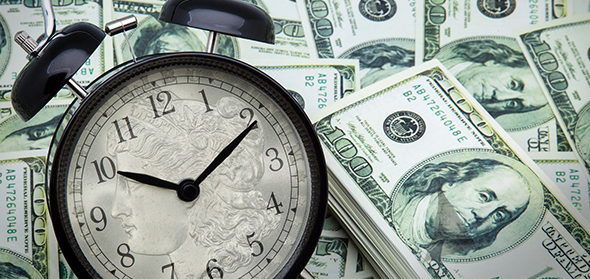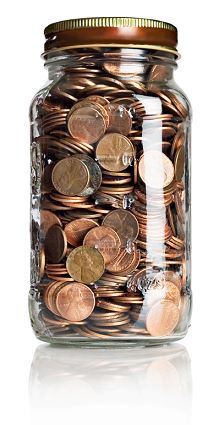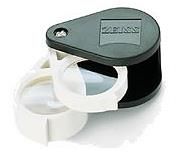
By Peter Mosiondz, Jr. ……
My friends, it is best to rid yourself of the false notion that merely acquiring any coins in any grade will place you on the fast track to untold riches. This is especially true of so-called “promoted” coins. Promoted coins are nothing more than coins that are in ample supply and held by many dealers who tout their potential for large financial gain. It should be readily apparent that any item held in huge quantity is neither scarce nor rare and thereby offers little hope for considerable price appreciation in the future.
Advertisements touting coins as an investment vehicle are nothing new. Would it surprise you to learn that one of the earliest ads appeared nearly 100 years ago? Wayte Raymond noted numismatic authority, dealer, publisher and owner of the United States Coin Company in New York City had this to say on the subject of investing in coins:
“Many harsh words are said about collectors who interest themselves in a natural speculation as to whether or not the coins they are buying today will have appreciated in value 10 years from now.
“Numismatists of the old school tell us that the true collector is not interested in any such appreciation in the value of his collection but derives his entire profit and pleasure from the coins while in his hands.
“We feel, however, that the average collector, while he greatly enjoyed hid coins, also feels very pleased if on disposing of his collection he realizes a profit.”
These words are as relevant today as they were when written in 1917.
We can categorize coin enthusiasts into one of three classifications – the numismatist, the collector, and the investor. We acknowledge the great importance of the coin dealer but, for our purpose here, we are speaking solely of the individual who buys and sells coins as a hobby. Let’s take a quick look at our three categories.
The numismatist purchases coins in choice, desirable condition in the best grade affordable. This individual spends a great deal of time reading about, studying and researching coins. He or she understands that certain objects of desire are just not available in the higher uncirculated grades and knows that an extremely fine or about uncirculated example will adequately fill the space. He or she further understands, through study and research, that certain items are grossly underpriced and under-appreciated despite a modest catalogue valuation. He or she may be the one who spends $1,000 on a coin that is in the catalogue with a $500 valuation. He or she knows that this particular coin is not commonly seen in such a lofty grade. In fact, he or she might have been searching for just such an example for many years. Our informed numismatist wastes no time in submitting his or her auction bid at twice the “book” value.
In essence we have someone who collects solely for the pure pleasures that numismatics provides. We also have the individual who stands the greatest chance of earning a substantial profit in years to come when the collection must be sold, although that is not a thought at the present time.
The collector is usually focused on obtaining as many coins as possible to fill slots in an album. Oftentimes condition and grade are not factors. Someone once asked me, “Why spend $50 on an uncirculated piece when I can get one for $5 in good condition?” This collector wanted more “bang for his bucks” but didn’t realize that at the time the collection is sold, the good example will not be desired by the buyer. The uncirculated piece would have been much more desirable to the buyer and thus have brought a much better return on the purchase price.
 The collector also buys coins for pleasure but also maintains the subliminal thought that the coins can be sold for more than originally spent on the collection. This brings a smile of self-satisfaction. He may not fully understand that despite the meager “paper profits”, the factor of inflation has not been considered. One analogy that I like to use is that the daily newspaper now costs me $1.00, whereas 50 years ago it sold for a nickel. I don’t have to elaborate on the fact that prices advance greatly over time. You already know that. The point is that the well-worn coin that costs $5 today may only sell for $10 some 20 years from now. That $10 will most likely not purchase the same goods that are available for $5 today. That is the effect of inflation. Our collector friend shows a $5 paper profit but has actually taken a loss. On the other hand, that uncirculated example would most likely have advanced at better than twice its cost 20 years later. Probably enough to offset inflation and show a real profit. There is absolutely nothing wrong with a collector enjoying the hobby in this fashion. High expectations of great profit must be cast aside, however. The moral here is to buy coins in the best possible condition that suits your budget. Quality is vastly superior to quantity. Personally I would rather have one beautiful uncirculated coin that cost me $200 than 50 well-worn coins priced at $5.00 each.
The collector also buys coins for pleasure but also maintains the subliminal thought that the coins can be sold for more than originally spent on the collection. This brings a smile of self-satisfaction. He may not fully understand that despite the meager “paper profits”, the factor of inflation has not been considered. One analogy that I like to use is that the daily newspaper now costs me $1.00, whereas 50 years ago it sold for a nickel. I don’t have to elaborate on the fact that prices advance greatly over time. You already know that. The point is that the well-worn coin that costs $5 today may only sell for $10 some 20 years from now. That $10 will most likely not purchase the same goods that are available for $5 today. That is the effect of inflation. Our collector friend shows a $5 paper profit but has actually taken a loss. On the other hand, that uncirculated example would most likely have advanced at better than twice its cost 20 years later. Probably enough to offset inflation and show a real profit. There is absolutely nothing wrong with a collector enjoying the hobby in this fashion. High expectations of great profit must be cast aside, however. The moral here is to buy coins in the best possible condition that suits your budget. Quality is vastly superior to quantity. Personally I would rather have one beautiful uncirculated coin that cost me $200 than 50 well-worn coins priced at $5.00 each.
The pure investor has no real idea as to what he or she is buying. Often it is because he or she has been “advised” to buy this or that. It has always seemed strange to me that a stock investor takes great care in learning as much about the company as possible into which he desires to make an investment when the same attitude doesn’t seem to pertain to coins. Read some numismatic books to learn more? Never! Too busy! “I’ve been told this is good and that’s all I need to know”. Earlier we mentioned “promotions”. This is the type of individual who will respond to such an advertisement, not being able to get the checkbook out quickly enough. The draw is the promise of quick and substantial gain. Does the investor ever stop to think that if someone had the knowledge that certain coins would double in price in (you name the time) that there is no logical reason to spend money on an ad so as to “share the wealth”? I don’t know about you but I would lay low and quietly buy up all I could and then reap my reward.
 Who stands the greatest chance to reap the pleasures and the profits from the coin hobby? I’ll place my bet on the numismatist. Best of all, anyone can become a numismatist if one is willing to make the commitment. There is so much more pleasure to be obtained in learning about our great hobby.
Who stands the greatest chance to reap the pleasures and the profits from the coin hobby? I’ll place my bet on the numismatist. Best of all, anyone can become a numismatist if one is willing to make the commitment. There is so much more pleasure to be obtained in learning about our great hobby.
So what are the fundamentals of coin investing?
- Buying choice and desirable coins and knowing which are undervalued.
- Focusing on quality rather than quantity.
- Learn all you can about coins. Become a numismatist.
- Remember that common, low-priced coins will always be common and low-priced.
- Low grade or damaged coins are usually not desired by anyone.
- Beware of promotions. There is not now and never will be a numismatic crystal ball.
- Hold coins for the long term, preferably a minimum of 10 years.
- Spend only your discretionary money on the hobby. Don’t borrow to buy.
- Learn how to grade coins. We covered this in some earlier segments.
- Be patient.
I’m tempted to call these our 10 Commandments of Coin Investing.
Do you have a monthly coin budget as I do? That is where the “be patient” comes into play. Just because you haven’t bought a coin all month, or have obtained only a few and still have coin money available, don’t let it burn a hole in your pocket. There will be opportunities next month. Put this month’s extra funds aside for the future. Select only the right opportunities.
Until next time, stay well and enjoy your hobby.
PCGS-Certified Morgan Dollars Currently Available on eBay
[wpebayads]





I don’t follow the difference between collector and numismatist. I see them as the same. Maybe the numismatist is more prudent, but we all make good and bad decisions in the hobby. As for quality vs quantity, your suggestion is pure opinion. Some favor it the other way around. I like quantity and quality, which is why I collect primarily world coins.